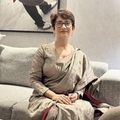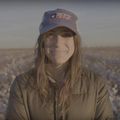Interviews
News Flash
German three-bar machines find growing market in Turkey
23 Aug '12
4 min read
Karl Mayer’s three-bar high-speed tricot machines are more flexible than virtually any other warp knitting machine range and sells well all over the world. These all-round machines have found a growing market in Turkey in particular.
Home textiles manufacturers especially are interested in the HKS 3-M (P) and HKS 3-1. Warp knitting companies as well as traditional weaving firms depend on the efficiency and production capabilities of three-bar tricot machines and are expanding their operations using Karl Mayer’s machines.
This boom has been fuelled by a government decision on 24 March 2011 to remove additional customs duties relating to the importation of warp-knitted textiles into Turkey. The ruling came into force shortly afterwards on 22 July. It did not apply to textiles originating in the EU. Warp-knitted textiles are mainly produced inside Turkey, and some are processed within a company group.
Karl Mayer delivered roughly 100 three-bar high-speed tricot machines to Turkey last year. Some of these machines were sent to manufacturers of marquisette fabrics. This lightweight, transparent fabric has become a firm favourite on the market as a high-quality embroidery ground in particular. However, the vast majority of tricot machines are used to produce velour fabric for covering upholstered furniture. There are three different ways of producing these fluffy cover textiles on the three-bar HKS machines.
The first method involves producing a typical loop-pile fabric from polyester filament yarns and then cutting the loops during the shearing process. This is the easiest method of producing velour textiles using the HKS 3-M P. Ground guide bar GB 1 works the tricot construction of the ground, while GB 2 produces the pile loops using a pillar stitch or counter notation tricot construction. The velour layer of the finished textile has high degree of orientation so that it is relatively flat.
In the second production method, the velvety surface of the fabric is not produced by pile loops but by an underlap.
The relatively long stretches of yarn, which are not tied in, are either cut open, emerised or raised. The raising process in particular requires a great deal of skill and experience, since as many of the filaments as possible have to be cut cleanly. Otherwise, the fabric could have a felted appearance and the quality would be decreased.
Popular News
Leave your Comments
Editor’s Pick
Christian Guinet
French Textile Equipment Manufacturers’ Association (UCMTF)
Pratik Gadia
The Yarn Bazaar - Filosha Infotech Private Limited
Jason Kent
British Textile Machinery Association (BTMA)
































-Ltd..jpg?tr=w-120,h-60,c-at_max,cm-pad_resize,bg-ffffff)





.jpg?tr=w-120,h-60,c-at_max,cm-pad_resize,bg-ffffff)
.jpg?tr=w-120,h-60,c-at_max,cm-pad_resize,bg-ffffff)






